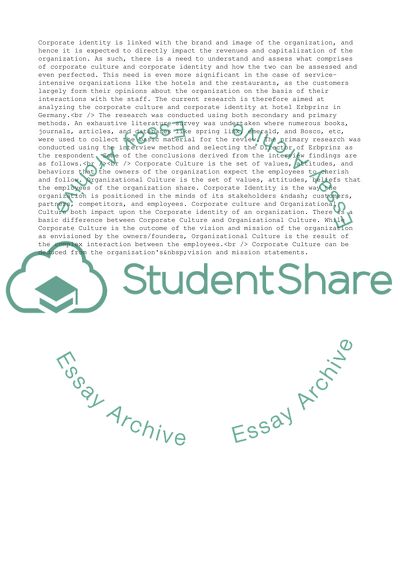Cite this document
(Corporate Culture and Corporate Identity with Special Reference to the Research Paper - 1, n.d.)
Corporate Culture and Corporate Identity with Special Reference to the Research Paper - 1. Retrieved from https://studentshare.org/business/1554482-analysis-of-corporate-culture-and-corporate-identity-with-special-reference-to-the-hotel-restaurant-erbprinz-ettlingen-germany
Corporate Culture and Corporate Identity with Special Reference to the Research Paper - 1. Retrieved from https://studentshare.org/business/1554482-analysis-of-corporate-culture-and-corporate-identity-with-special-reference-to-the-hotel-restaurant-erbprinz-ettlingen-germany
(Corporate Culture and Corporate Identity With Special Reference to the Research Paper - 1)
Corporate Culture and Corporate Identity With Special Reference to the Research Paper - 1. https://studentshare.org/business/1554482-analysis-of-corporate-culture-and-corporate-identity-with-special-reference-to-the-hotel-restaurant-erbprinz-ettlingen-germany.
Corporate Culture and Corporate Identity With Special Reference to the Research Paper - 1. https://studentshare.org/business/1554482-analysis-of-corporate-culture-and-corporate-identity-with-special-reference-to-the-hotel-restaurant-erbprinz-ettlingen-germany.
“Corporate Culture and Corporate Identity With Special Reference to the Research Paper - 1”, n.d. https://studentshare.org/business/1554482-analysis-of-corporate-culture-and-corporate-identity-with-special-reference-to-the-hotel-restaurant-erbprinz-ettlingen-germany.


